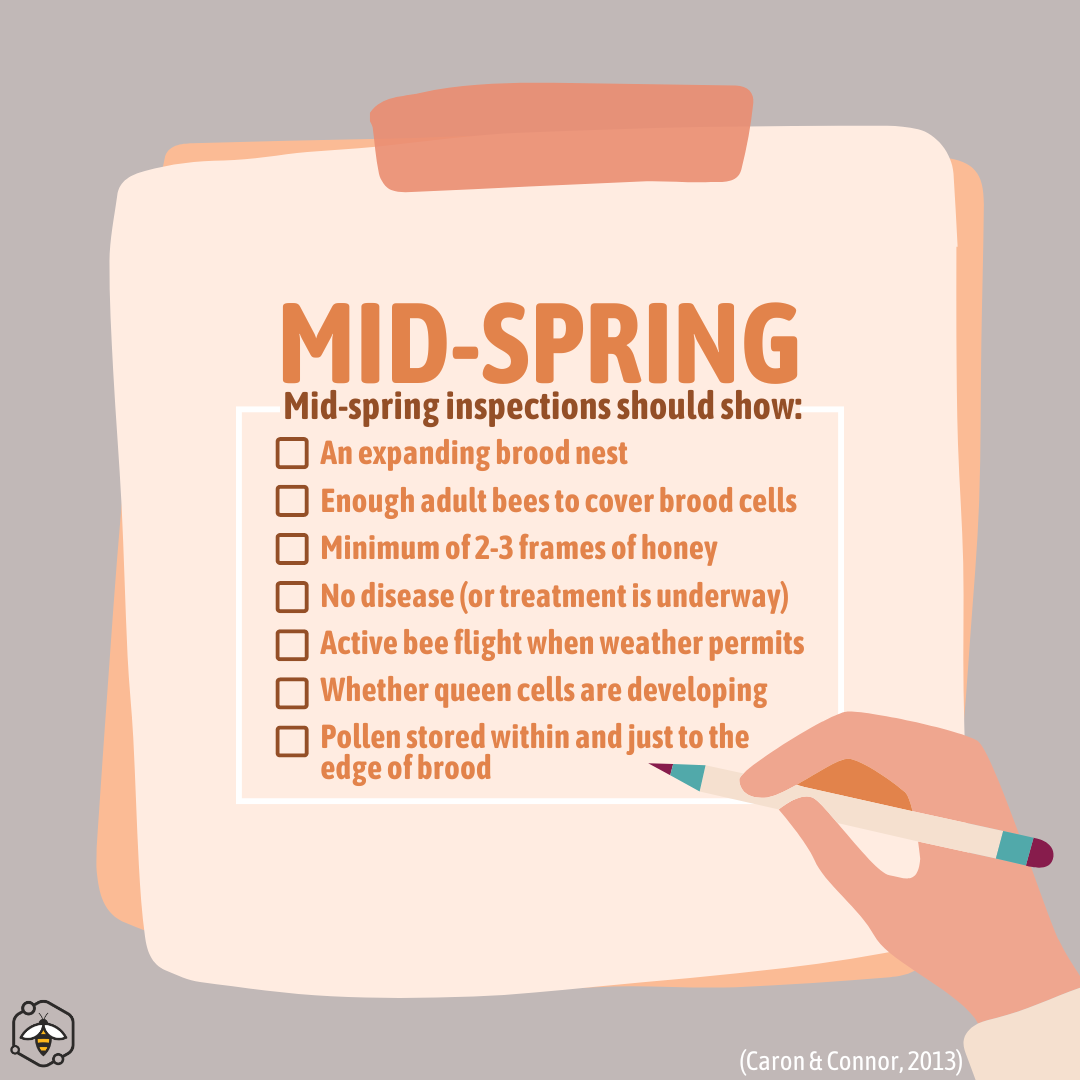Spring Management
February 2024
By Leilani Pulsifer
In British Columbia, the beekeeping season typically starts in the spring once the outside temperature is above 10°C. Since British Columbia is home to eight regions, each with their own distinct climates, don’t be surprised if your beekeeping seasons starts at a different time than your beekeeping friends across the province. In general, however, spring management can be split into three stages: early, mid, and late spring management.
Early Spring Management
Also known as the midwinter inspection, the goal of early spring management is to find out what colonies have survived the winter, determine what caused any winterkill, and ensure that surviving colonies have enough stores. Keep in mind that at this point, it is still too cold for your bees to regularly be leaving the hive. Be sure that with every task you are performing you minimize any change to the internal temperature of the hive. A basic early spring/midwinter inspection should include the following:
Confirm your bees are expanding without removing frames from the hive.
Determine if surviving colonies have adequate stores.
Diagnose the reason(s) for any winterkill.
Provide extra feed if necessary.
Close dead colonies and remove to a storage area, if possible, to prevent robbing behavior. This will reduce the spread of disease.
On a nice day, clean the bottom of the hive to save your bees some labor!
Mid-Spring Inspection
A mid-spring inspection is primarily done to determine the health of the colony and ensure that it can make it through the spring. A successful mid-spring inspection should show:
An expanding brood nest.
Enough adult bees to cover brood cells.
A minimum of 2-3 frames of honey.
No disease (or treatment is underway).
Active bee flight when weather permits.
Whether queen cells are developing.
Pollen stored within and to the edge of brood.
Late-Spring Inspection
The primary purpose for the late-spring inspection is to provide supers for your colony. A super is additional storage for your colony to keep excess honey and pollen for easy access throughout the season. By late spring, your colonies should have:
2-3 frames of honey.
Healthy brood.
No poor combs/frames (these should be cycled out of the brood nest).
Additional feed and frames of capped brood if necessary.
Supers – this is the primary activity for late-spring management.
Because British Columbia is home to so many different climates, the timing of your early-, mid-, and late-spring inspections will vary. To help inform your decisions, remember these temperatures:
10°C: Minimum temperature to open the hive.
15°C: Minimum temperature to remove frames from the hive.
35°C: Ideal temperature for inside the hive.
In general and depending on where you’re located, your early-spring inspection could take place as early as February, your mid-spring inspection could take place when temperatures are consistently above 10°C, and your late-spring inspection could take place as early as May before the nectar flow season begins.
If you’re not sure what time of year is best to do these inspections, talk to your beekeeping community and see what works well for others in your area! To join your local bee club, visit ttp-bchpa.ca/get-involved for a list of beekeeping clubs in British Columbia.
///
Are you interested in learning about honey bee biology, pests & diseases of the honey bee, or becoming a certified beekeeping instructor in British Columbia? Take our online courses available now! Visit ttp-bchpa.ca/our-courses for more information.





